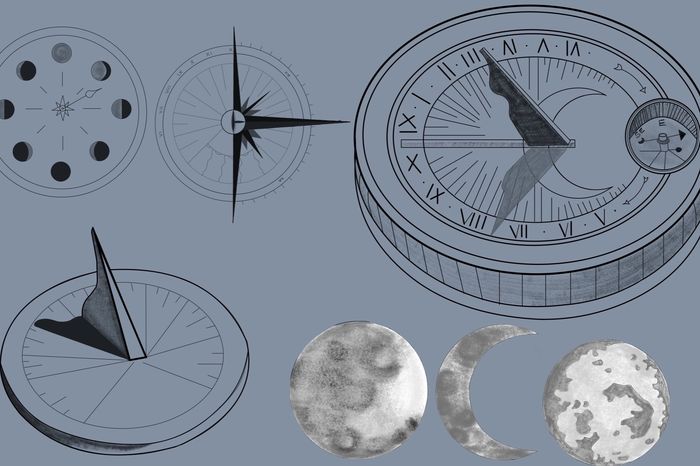Does Chinese acupuncture have a place in modern medicine?
Yi Sum Yue explores the culture and controversy of Traditional Chinese Medicine

Growing up loving science, I felt comfort in the explainable. The rigorous methodologies and evidence behind modern science followed a logical pathway of reasoning. Now, studying Veterinary Medicine at Cambridge, I understand the weight of the science that roots diagnoses and treatment in evidence and fact. However, I have developed an even greater appreciation of accepting the unknown as I grow older.
Being a Cantonese Singaporean, Traditional Chinese Medicine (TCM) has always been in my life (and the world’s for the past 2000 years). TCM, and by extension Chinese acupuncture, along with many other cultural medical practices, exists within realms that science can’t fully comprehend. It isn’t completely ‘translatable’ to science. Despite this, its practice is growing in popularity, and the integration of Western medicine and TCM into a more holistic healthcare system is becoming more prevalent. Therefore, it begs the question: does Chinese acupuncture have a place in modern medicine?
Chinese acupuncture is an ancient medical technique for relieving pain, curing disease, and improving general health. It is based on the foundation of TCM, which stems from the Chinese philosophy of yin and yang. These two forces oppose each other in all living organisms and can cause imbalance and disease. Imbalance results in the obstruction of 气 (qi, or life force), which flows through twelve meridians or pathways in the body. Each is associated with a major visceral organ and a functional body system. Chinese acupuncture inserts thin metal needles on precise points along the meridians of the body known as acupoints. This affects the distribution of yin and yang for qi to flow freely and harmoniously.
“The integration of Western medicine and TCM into a more holistic healthcare system is becoming more prevalent”
One of the problems Western medicine and science has with understanding TCM is its methodology and how the treatment it prescribes works. TCM practitioners focus on restoring balance in the body, rather than targeting disease and observing symptoms and signs with modern diagnostic tools. Therefore, it may not identify the disease but is effective in managing diseases or health conditions which are not restricted to specific, identifiable processes. This can include stress-related disorders, chronic fatigue, or digestive dysfunctions. In the world of research papers, this can lead to vague methodologies, as treatment varies in patients to be specifically tailored to the individual.
Amongst many, a common use of acupuncture is to relieve chronic pain by acting on the central nervous system. Acupuncture alters the metabolism of neurotransmitters involved in pathways to the brain. For instance, electrical acupuncture stimulation at specific acupoints causes the inhibition of substance P and glutamate release, which are key compounds involved in signalling pain. It is also shown to inhibit the transmission of painful information back to the brain. Additionally, acupuncture has been proven to stimulate structures in the brain and release natural pain relievers known as endorphins and enkephalins.
“Acupuncture has been proven to stimulate structures in the brain and release natural pain relievers”
This concept can even be applied to that time of the month: acupuncture has been proven to alleviate menstrual cramps. In a study, women were randomly allocated into two groups, a control with no treatment and a study where only acupuncture was given as a form of pain relief. Results showed a significant reduction in pain severity, muscle cramps, and systemic symptoms compared to the control group, and has also been replicated in further studies.
Auricular acupuncture has been proven to aid in cancer pain relief. In a study conducted by a French hospital, subjects were divided into three groups: one group had two courses of acupuncture, and two placebo groups had acupuncture away from acupoints (placebo points with no measure of electrical changes in the skin). All subjects had been in a certain level of pain beforehand despite having at least one month of previous Western analgesic treatment. At two months of auricular acupuncture, results showed pain intensity decreased by 36% in the study group, while there was little change for patients receiving placebo.
The combination of Western medicine and TCM is still an emerging field, and more large-scale randomized controlled trials will give a clearer picture of the potential or limitations of acupuncture and TCM. Despite this, it is not under global regulation, with countries such as the United States regulating acupuncture with the FDA, while the UK government encourages registration with voluntary groups such as the British Acupuncture Council. Although when practiced correctly is painless and has few side effects, it is important to always check certification and ensure TCM practitioners have proper licensing. Additionally, any previous medication or medical history should be taken into consideration before starting treatment.
Overall, it is evident that Chinese acupuncture has a significant impact on some aspects of patient care, such as chronic pain relief in a variety of conditions. However, exploration into its application in other fields such as depression and anxiety has yet to be substantiated by sufficient Western medical research. To be clear, I am not challenging Western medicine, but I am challenging you to be more open to the potential of integrating cultural medicinal practices such as TCM to create a more comprehensive healthcare system.
Want to share your thoughts on this article? Send us a letter to letters@varsity.co.uk or by using this form.
 News / Uni Scout and Guide Club affirms trans inclusion 12 December 2025
News / Uni Scout and Guide Club affirms trans inclusion 12 December 2025 News / Pembroke to convert listed office building into accom9 December 2025
News / Pembroke to convert listed office building into accom9 December 2025 Features / Searching for community in queer Cambridge10 December 2025
Features / Searching for community in queer Cambridge10 December 2025 News / Uni redundancy consultation ‘falls short of legal duties’, unions say6 December 2025
News / Uni redundancy consultation ‘falls short of legal duties’, unions say6 December 2025 News / Gov declares £31m bus investment for Cambridge8 December 2025
News / Gov declares £31m bus investment for Cambridge8 December 2025









